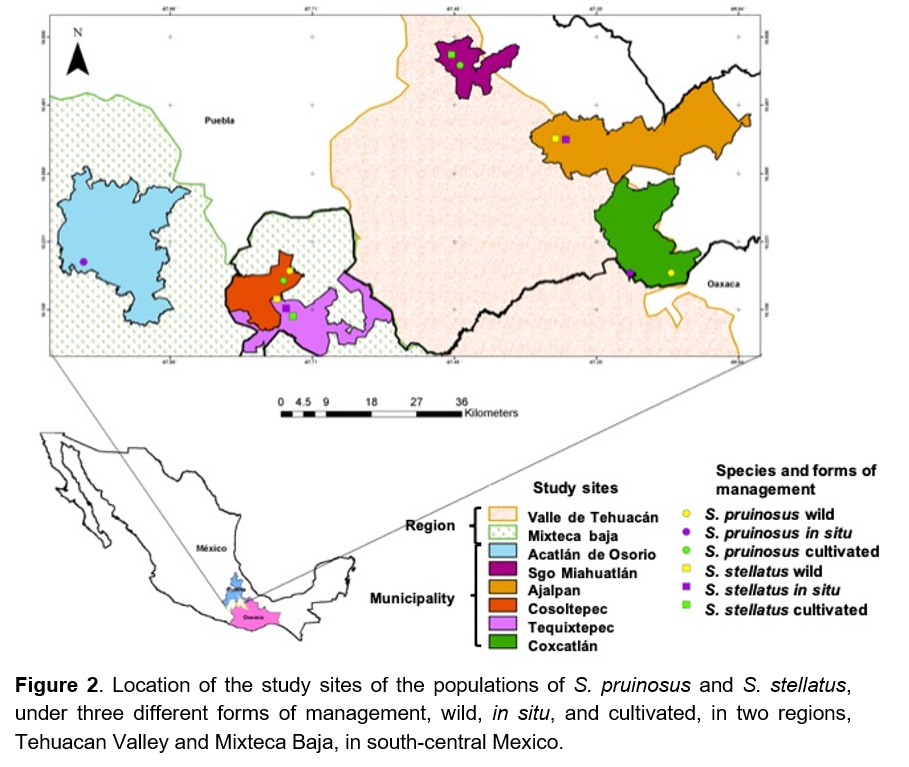Characterization of the damage and its effect on the production of pitayas Stenocereus pruinosus and S. stellatus under different forms of management in Central Mexico
DOI:
https://doi.org/10.56890/jpacd.v25i.527Keywords:
columnar cacti, damage, ethnobotany, fruit production, human selectionAbstract
The use of several columnar cacti stretches back several thousand years and is still going at the present. In many of them, their populations within their range of distribution, are subject to three forms of management, including wild, in situ, and cultivated, each of one exposed to different types of damage, biological or physical. This study attempted to characterize the types of damage affecting pitayas (Stenocereus pruinosus and S. stellatus) in central and southern Mexico, and to analyze the relationship between some types of damage under different forms of management, and its effect on reproductive success. The two species were sampled in three populations with different forms of management. The branches (167-180) were selected and measured the amount of damage, characterized the types of damage, and a percentage of the total damage together with the number of fruits that were produced throughout their annual fruiting season were estimated. A x2 test was used to determine the variations in the characterized damage, and the effects of the damage on fruit production in populations with different forms of management was assessed using linear regressions. The eight different types of damage were listed, its frequency, and the effect of damage on fruit production varies in populations. Depending on human management, populations managed demonstrate acceptance of some types of damage by pitaya farmers: bird nests and external black scar, which do not affect the production of fruits; and reduction of others, branch rot and ant herbivory, the latter of which does affect the production of fruits. The fisheye disease, anthropogenic, gray scab and sooty mold and branch rot damage should be addressed in plant health activities in all populations, and the exchange of knowledge with pitaya farmers should be developed to propose measures to attend to these damages. This will support the sustainable use of the species.
Publication Facts
Reviewer profiles N/A
Author statements
Indexed in
- Academic society
- Journal of the Professional Association for Cactus Development
- Publisher
- Professional Association for Cactus Development




